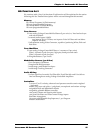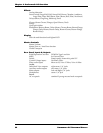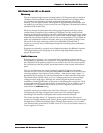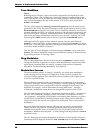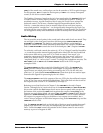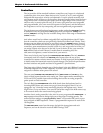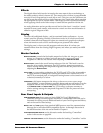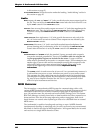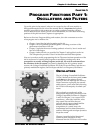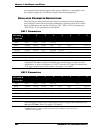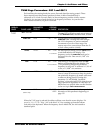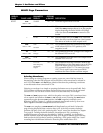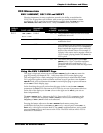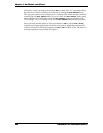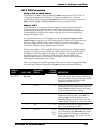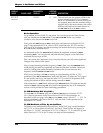
Chapter 5: Oscillators and Filters
ANDROMEDA A6 REFERENCE MANUAL 103
CHAPTER 5
PROGRAM FUNCTIONS PART 1:
OSCILLATORS AND FILTERS
Up to this point in the manual, what we’ve covered so far will serve mainly as
background material for the rest of the manual. But it is important background
material, especially for A6 owners new to analog synthesis or analog veterans
who’ve been away for awhile. For the rest of the manual, we’ll be cross-referencing
portions of the previous four Chapters as appropriate.
Before we dive into Program editing and creation, let’s take a moment to review
what progress we’ve made so far:
• Chapter 1 provides the info for setting up the A6.
• Chapter 2 is an expanded QuickStart guide: a working overview of the
performance functions of the A6.
• Chapter 3 explains the roots of analog synthesis: what it is, how it works and
how all of this began.
• Chapter 4 takes the info we provided in Chapter 3 and applies it to the A6.
This Chapter also provides a list of A6 functions and brief descriptions.
Now we’re ready to tackle programming the A6. The most intricate operations of the
A6 lie in the area of creating new Programs or modifying existing ones. As a
prerequisite to actually creating Programs on the A6, we need to understand how
the functions of the A6 operate. Let’s start by detailing the A6’s primary sound
sources, the Voltage Controlled Oscillators. We’ll then cover the Filters, and the two
primary modulation engines, the Envelopes and the Low Frequency Oscillators.
OSCILLATORS
The A6’s Voltage Controlled Oscillators
(VCOs), labeled on the front panel as
OSC
1
and OSC 2, are the primary sound
sources in the A6. Although the A6 has a
Noise Generator and inputs for external
audio sources, you’ll most likely be using
the VCOs for the majority of sounds you
create.
We’ve already covered much of the
background and primary functions of the
Voltage Controlled Oscillator in Chapters
3 and 4. In Chapter 3, we covered VCO
waveforms – what they look like, what
they sound like and how they are
typically used to approximate familiar
sounds. We also discussed the
composition of a sound wave: the
fundamental and its related harmonics
and how filtering and envelope dynamics
shape the sound.
Chapter 4 provided a brief functional
overview of the oscillators. It also
discussed how the VCOs (as well as other



